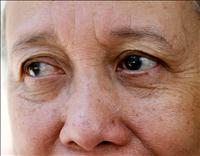
Digital News Report – A woman in early menopause who has more facial wrinkles has an increased risk for low bone density suggested a study that was funded by Aurora Foundation and the Kronos Longevity Research Institute in Phoenix. On Monday, the study results will be presented at The Endocrine Society’s 93rd Annual Meeting in Boston.
The principal researcher, Lubna Pal, MD, a reproductive endocrinologist and associate professor at Yale School of Medicine, New Haven, Conn., said that looking at the skin for wrinkles in post-menopausal women could help determine the bone density without using costly tests.
This is a smaller study that is part of an ongoing trial called the Kronos Early Estrogen Prevention Study (KEEPS). This study included 114 women that were in their late 40’s and early 50’s that had their last menstrual period in the last three years. These women also did not take hormone treatments. Also the women that had cosmetic surgery were not included in the research.
The researchers assessed the amount of face and neck wrinkles at several locations. They determined the depth of wrinkles, and the skin firmness using a durometer. They scored each based the amount of wrinkles they had along with firmness. Then they had the participants have a bone density test using a dual X-ray absorptiometry (DEXA) equipment and also with a heel ultrasound device.
The study data showed an association between the wrinkles and bone density. The worse the wrinkles were the lower the bone density measured. Women that had firmer skin on the face and forehead showed a higher bone density.
Pal suggests that possibly the skin and the bones use a common building block of collagen. When the collagen is lost in the skin more wrinkles can appear. The lack of collagen in the bones could cause bone deterioration. Even though the study showed a correlation, she said that a long-term study would need to be completed to further prove this as being true.
By Victoria Brown
